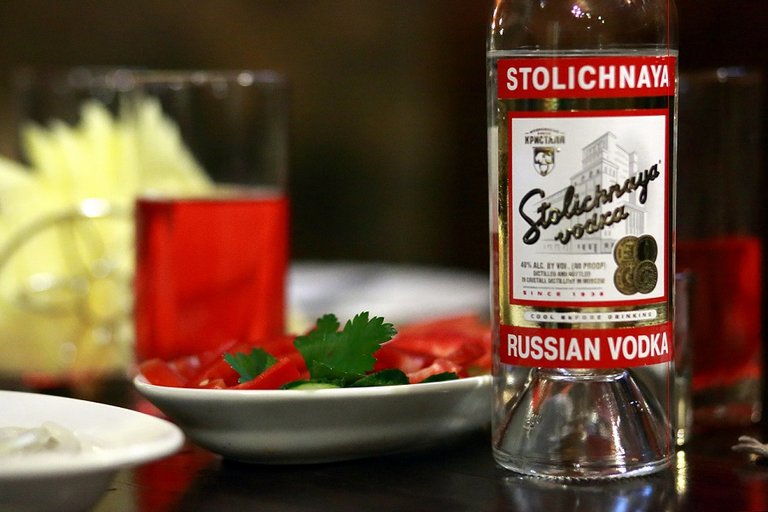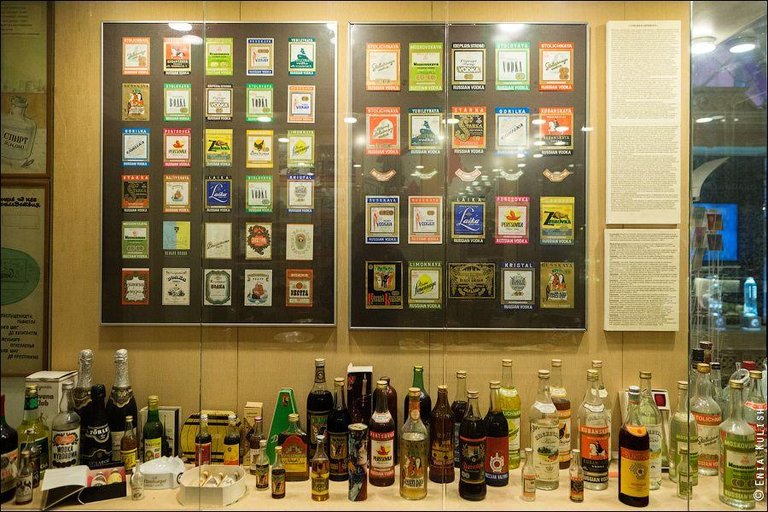31 Dec 1863 in Russia there was a very significant event – was canceled off of drinking that meant the introduction of the state monopoly on trade in alcohol. This reform, according to historians, had several objectives. First, the fiscal, because the government wanted to increase revenue, secondly, it was necessary to improve the quality of spirits, and the third is to improve the culture of their consumption. However, all this is relevant today, and the vodka in my Russian history, without losing the popularity it has acquired a mass of interesting facts.

Since the official appearance of vodka in Russia it took 127 years In the usual modern man 40-degree as vodka was introduced officially on December 6, 1886. It was then in the Charter on drinking charges has fixed the norm of the fortress. It should be noted that the word "vodka" did not exist. In public acts of that time and trading statements in the Russian Empire vodka called "simple strong table wine", "polugar", "medow" and "moonshine". Finally vodka vodka was only when the Soviets when the trading name prescribed in Guest.
At Ekaterina II, vodka was only sold in buckets The first drinking establishment in Moscow was opened during the reign of Catherine II in 1533. At that time vodka was considered the most elite drink in the world. It is worth noting that since that time in Russia there's a saying "to drink vodka buckets". The fact is that up to 1885 about "popularaj" the people are not heard. Vodka was sold only in buckets – 12.3 liters. Usual for modern people bottle as a packaging for vodka began to be used only in 1894.
Medal "For drunkenness" was founded by Peter I in 1714. He decided that it would be a panacea for alcoholism. Probably, the first Russian Emperor relied on a prophetic inscription, giving the man a drinker, and the weight of the coin. Together with the collar and chain the medal weighed 8 kg. "Awarded" the medal at the police station and mounted so that to remove her was impossible. To wear the medal had a week.

The hardest medal in the history of Russia - the medal "For drunkenness"
In the middle of the XVIII century distilling – the privilege of nobility In the second half of the 18th century in Russia the vodka was only "home" production. And all because of the decree of 31 March 1755, which was ordered to seize all distilleries that kept merchants under the guise of noblemen or on equal footing with the nobility. However, this is guaranteed high quality product because it was assumed that vodka is a drink designed for the privileged layers of society. Was purified from fusel oil vodka only natural animal proteins, coagulants, although it was extremely expensive: for 6 buckets of vodka the first race was started half a bucket of egg whites or milk bucket.
The great Russian scientist Dmitri Ivanovich Mendeleev at the time, showed his colleagues his doctoral dissertation "On the connection of alcohol with water" which is directly to the vodka and to the establishment of the standard of the fortress 40% has no relation. The fact is that until 1886 the basic normative strongholds of the hot drink was 38.3%. And just for ease of calculations, taking into account the stock "shrinkage" and to to the consumer in any case guaranteed reached 38 degrees, the norm of the fortress was rounded up to 40.

- Prohibition in Russia was introduced a few times In 1914 in Russia was issued a Royal decree banning the production of all types of alcohol throughout Russia. First, the trade in alcohol was banned for a month – at the beginning of the First world war at the time of mobilization. Then extended for the duration of the war. At that time alcohol could buy only in the restaurant. And even given the fact that there were numerous ways to circumvent the law, the average consumption of alcohol in Russia for 1 person decreased by 10 times. To the level of 1914, the country has returned only in 1960-ies. According to statistics, 1914 in St. Petersburg was reduced by 70% the number of people arrested in a drunken state, 29 times the number watersplashes by 50% the number of suicides on the basis of alcohol, and the deposits in savings banks increased by 1.3 billion rubles. However, the country began to flourish the consumption of surrogates and secret moonshine.

- With the arrival of the Soviets the struggle with alcoholism continued, extending in 1917, the ban on the sale of vodka. In 1919, a decree signed by Lenin for prohibited the manufacture and sale of alcohol, alcoholic beverages and non-beverage alcohol-containing substances, and for violation of norms provided for the confiscation of property and imprisonment up to 5 years. Resumed production and trade in alcohol only in 1923.

It should be noted that today a regional law banning the sale of alcohol on Saturdays and Sundays and after 20:00 each day, operates in the Ulyanovsk region. In April of 2013 in Dagestan has approved a bill banning the sale of alcohol on some days, particularly in the children's Day, knowledge Day and during the month of Ramadan. The most stringent anti-alcohol measures taken in the Republic of Yakutia. There the sale of vodka prohibited from 20 hours to 14 hours the next day.
The vodka history Museum is located in Moscow, Izmailovo shosse. The Museum's collection allows you to meet 500-year history of vodka. The Museum exhibits more than 600 kinds of this drink, as well as photographs, posters, Royal and presidential decrees, old vodka recipes of the XVIII century, the historical types of bottles and labels. The Museum has several branches: the old Russian era, the Russian Empire, the Great Patriotic war, the Soviet Union, modern Russia. The most valuable collections consider a collection of vodka bottles N. L.Shustova and bottle Supplier court of His Imperial Majesty P. A. Smirnov (1900).

The largest vodka Museum in Moscow
- In January 1940, during the Soviet-Finnish war red Army men began to vodka rations, which was called "Voroshilov rations" or "narkomovskih 100 grams". In may 1942 vodka daily issued to the soldiers on the front line. Moreover, later the rate was increased to 200 grams. On the Transcaucasian front were given no vodka, and 300 grams of dry wine or 200 grams of port wine.

In the red Army were given vodka "Voroshilov rations"
I think I have satisfied lubopitstvo willing, on request, to find interesting facts about the Russian Vodka. And this helped me the source of the article http://www.yaplakal.com/forum3/topic1609221.html
P.S And yet...
Vodka – drink expensive, require expensive support of: smoked and salted salmon, caviar, sturgeon, salmon, pickled mushrooms, dumplings or pancakes. Without nourishing and saltish snack to reveal the taste qualities of the drink is impossible. By the way, good effect and give fresh green onion, pickles and herring with boiled potatoes.


За здоровье, товарищ Кондрат! )
Благодарю мастер :))
Добавился и с меня + на первую запись твою.
Благодарю. Взаимно.